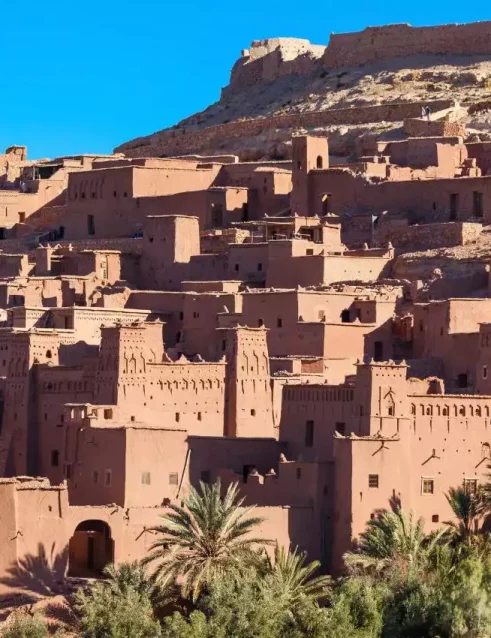The Vibrant Lives of Morocco Berbers

The Diverse Facets of Amazigh Tribes
Encompassing an exquisite blend of nomadic and sedentary lifestyles, the Amazigh communities, such as the Riffians, the Chleuh, and the Central Moroccan Amazigh, scatter across the diversified terrains of North Africa. These groups express their cultural wealth through diverse livelihoods, from subsistence farming, weaving, and dyeing fabrics to skillful crafting of Amazigh carpets, an artisan skill treasured by many. The majestically modest adobe homes, nestled amidst the mountains, not only mirror their rich traditions but also symbolize the importance of home and family in their culture.
Navigating Through The Atlas Mountains
Indeed, the heart of Amazigh life pulsates through the peaks and valleys of the Atlas Mountains. Historically, the region has witnessed Amazigh farmers leading their livestock to summer pastures, entwining their lives with the rhythms of the land. Exploring these terrains with an Amazigh guide provides travelers with a direct path into the physical landscape as well as an insightful passage through the wealth of generational knowledge and wisdom of the Berber people.

An Intimate Glimpse into Berber Villages
The heart of Morocco beckons travelers into the life and warmth of Berber villages. Even though electricity and modern amenities make subtle inroads into their lives, the Amazigh communities continue to gracefully balance the preservation of their culture with adapting to evolving times. The modest clay houses, internal patios, and communal living spaces show the profound connection of Morocco Berbers to the land.
Berbers in the Eyes of Visitors
Journeys through Amazigh regions, like the thriving town of Amizmiz at the base of the Atlas Mountains, offer visitors a chance to be amidst the Morocco Berbers. These journeys often unfold against the backdrop of modest homes, with endless hospitality, and every shared cup of tea becomes a gentle pour of shared stories.
Hierarchies and Roles Within Berber Tribes
Morocco Berber tribes have a wide array of social structures that play crucial roles in preserving their cultural standards and ensuring social stability. Each tribe displays its unique approach to leadership and family roles, revealing a variety of social practices among the Berber communities. While many tribes follow a patriarchal system where men make most major decisions, the Tuareg tribe is an exception, practicing a matriarchal system where women have notable authority, including choosing their own husbands. The clear and firm leadership structures, overseen by tribal leaders, have historically been essential for keeping peace, promoting unity, and protecting the cultural and social values of the Berber tribes, even in the diverse and sometimes challenging environments of North Africa. This strict following of traditional structures has strengthened the social bonds within each tribe and helped keep their cultural heritage alive over many years.

Immersing in Berber Artistic Expressions
The art and culture of the Morocco Berbers provide a practical yet creative outlook on Amazigh life, blending usefulness with visual appeal in their various forms of expression. The Berbers create art that is deeply tied to their day-to-day activities and natural surroundings, utilizing a range of materials and techniques that have evolved through their extensive history.
Symbolism and Skill in Kilim Weaving
Kilims, the tapestry-woven carpets, stand out as a radiant beacon within Berber art, encapsulating an exquisite blend of utility and aesthetic symbolism. These geometrically inspired designs, woven meticulously by skilled hands, are far more than mere floor coverings. They are a canvas upon which stories, beliefs, and tribal identities are etched, each pattern and hue narrating tales of journeys, landscapes, and Amazigh lore. The art of kilim weaving also unveils the matriarchal threads within Berber culture, where women have traditionally been the weavers, their hands crafting and carrying forward the visual narratives of their tribes.

Elegance and Identity in Berber Jewelry
Vibrancy and Ritual in Traditional Make-up

A Culinary Journey Through Berber Cuisine
Berber cuisine showcases a variety of flavors, aromas, and textures, reflecting the landscapes and cultural aspects of the Amazigh. Couscous, a fundamental dish in Berber cuisine, is made of crushed durum wheat semolina and is often served with vegetables, meats, or stews. Its preparation and consumption become acts of togetherness and sharing. Tagines, with their simmering stews, speak to the harmony of local ingredients, slow-cooked perfection, and the balance of spices, reflecting the Berber’s deep-rooted connection with the land and seasons.
Exploring Amazigh Culture in Marrakech
In Marrakech, institutions like the Tiskiwin Museum and the Berber museum in Majorelle Gardens offer insightful glimpses into Amazigh culture and history. The Tiskiwin Museum, founded by a Dutch anthropologist, showcases a notable collection of cultural artifacts, while the Berber museum in Majorelle Gardens is renowned for its extensive exhibition of Berber objects, providing visitors with first hand explorations of the lives and traditions of the Morocco Berbers.
Exploring the traditions and lifestyle of the Amazigh offers both travelers a concrete understanding of Morocco Berbers. Observing the skilled crafting of kilims, listening to oral histories, and navigating the mountain trails bring forth a direct interaction with their enduring culture. Engaging with these elements underscores the importance of preserving and appreciating the intricate cultural practices of the Berber communities in Morocco.









